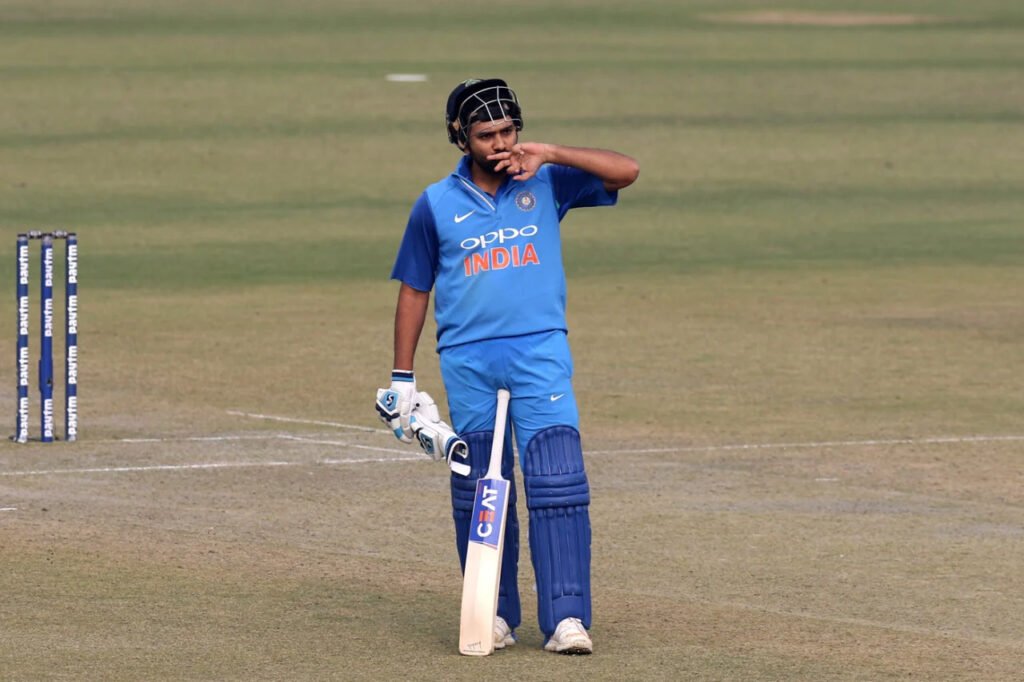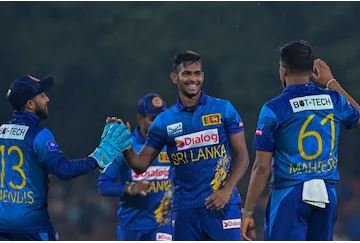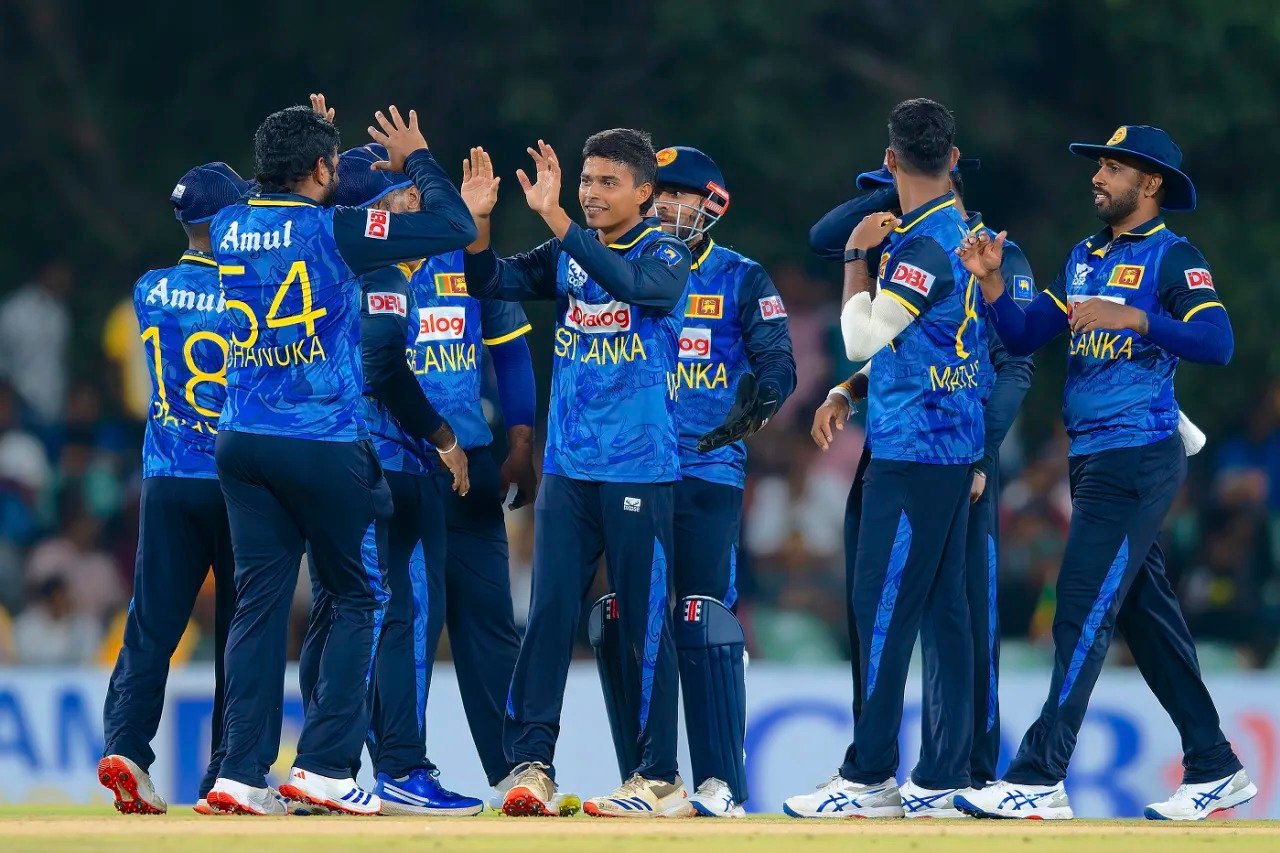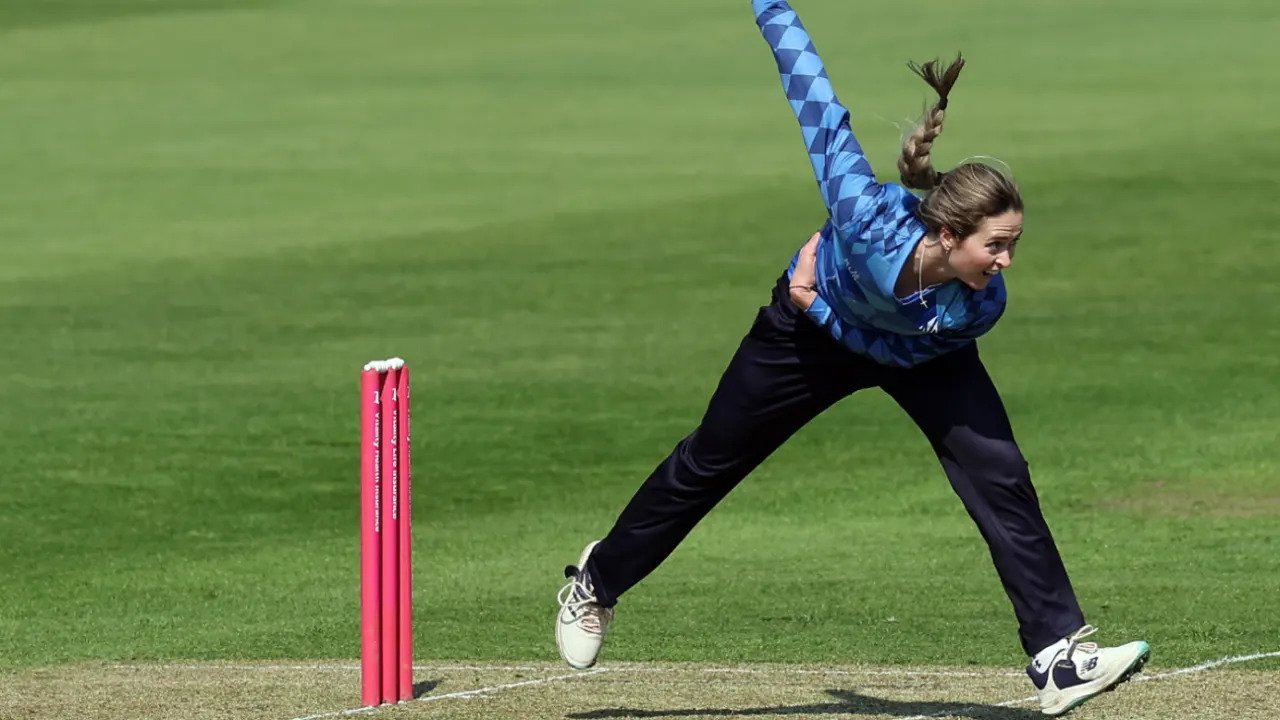Rohit Sharma’s unbeaten 208 in Mohali powered India to a commanding 141-run victory over Sri Lanka, leveling the series in spectacular fashion.
In one-day internationals, Rohit Sharma follows a simple pattern: be cautious in the first ten overs, build up in the next thirty overs, and launch a fierce attack in the final ten. Having given up 264 runs to him in Kolkata three years prior, Sri Lanka was well aware of this, but he reminded them once more in excellent batting conditions in Mohali. With a 141-run thumping, he blasted his way to his third double-century in ODIs, catapulting India to 392 for 4.

India defeated Sri Lanka 251 for 8 (Mathews 111*, Gunaratne 34, Chahal 3-60) by 141 runs with 392 for 4 (Rohit 208*, Iyer 88, Dhawan 68).
With quick half-centuries from Shikhar Dhawan and Shreyas Iyer, Rohit able company as India recorded their 100th 300+ ODI total. Similar to AB de Villiers’ 114 against India in Gwalior in 2010, Angelo Mathews led Sri Lanka’s losing struggle with a fighting hundred, his second in ODIs, but it didn’t detract much from a magnificent double-hundred.
Sri Lanka’s response to Rohit was to slow down the pace of the ball and attempt to bowl short because of Mohali’s wide boundaries. It was unsuccessful. Suranga Lakmal and Nuwan Pradeep, two end-overs experts from Sri Lanka, then attempted to drive in wide yorkers. It was unsuccessful. Yorkers who are straight? Nope. Sixes were over midwicket and square leg on low full-tosses. Sri Lanka felt more and more powerless as the intimidation increased.
The closing section of Rohit’s innings was so fast-paced that he completed more than half of his unbeaten 208 in the final 10 overs. By the conclusion of the 40th over, he had edged his way to his 16th ODI century and proceeded to smash 107 more off his last 37 balls. Nearly 70% of his runs, or 144, came from squares on either side of the wicket.
In the final ten overs, India scored 147 runs. Nuwan Pradeep ended with 10-0-106-0, seven runs short of Mick Lewis’ record for most runs conceded in an ODI.
In sports, confidence is perhaps the most important component. Any squad that has lost their last game to a score of 29 for 7 is going to be wary. Because of this, when India was sent to bat in foggy conditions, Rohit and Dhawan restrained their want to attack, which allowed Sri Lanka’s seamers, who were in form at the time, to win the first Powerplay by scoring just 33 runs in the first ten overs.
In addition to being skilled in Powerplay single steals with deft hands, Rohit and Dhawan are also skilled because they have varied preferred lengths. When bowlers make a mistake, Dhawan stays back and waits for it, while Rohit prefers the longer length when they do. Sri Lanka discovered the ideal length in between for ten overs.
They erred too often as fatigue set in and the new bowlers needed time to get comfortable. In a few overs, India’s run-rate increased from slightly over three to more than five. Dhawan was especially effective square on both sides of the wicket, smashing nine fours prior to forcing a flick from Sachith Pathirana to midwicket.
Also Read: Rohit Sharma’s Record-Breaking 264: A Masterclass in ODI Cricket As India Dominated Sri Lanka
Rohit selected only the erroneous deliveries to attack after cruising to fifty. Still, Iyer’s aggressive style kept India’s run-rate high. He moved calm to 11 off 15, but even though he didn’t get to the ball’s pitch, he chipped down the track off Pathirana and smacked him over mid-on. Iyer took advantage of Sri Lanka’s shift in length.

After Rohit’s ton, Iyer took the lead. He demonstrated the powerful bottom-handed swing that is practically a need in contemporary ODI batting. Additionally, he demonstrated his touch by steering and cutting balls to and from the point. In the 46th over, he eventually holed out for 88 off 70 balls, an innings that included two sixes and nine fours, but the damage had already been done.
After Sri Lanka toiled their way to 41 for 2 in the first 10 overs, the chase collapsed quickly. Danushka Gunathilaka was strangled along the side of her calf when Upul Tharanga slapped a catch to cover. Lahiru Thirimanne’s dismal performance persisted as he managed just 21 runs off 34 balls before attempting a deliberately planned reverse-sweep against Washington Sundar, who was dismissed for just his ninth ball in One-Day Internationals.
Mathews anchored Sri Lanka’s middle order, which batted with purpose and aggression. With more than half the innings remaining, Niroshan Dickwella and Asela Gunaratne made quick appearances but were removed while attempting to keep up with an asking rate that had skyrocketed above 10 runs per over.
Mathews stepped out to hit over the in-field when he could. When he was unable to, he squeezed out runs on the leg side with his wrists and bottom hand. Of his 111 runs without defeat, 72 were from the leg side, or 65% of his total.





